Chickweed (Stellaria media) is a fast-growing, nutrient-packed leafy green that often grows wild in gardens, lawns, and even cracks in pavements. Known for its mild, slightly sweet flavor, chickweed has been used for centuries in traditional medicine, culinary dishes, and as a nourishing leafy vegetable. Harvesting chickweed at the right time and using it correctly ensures maximum flavor, nutrition, and continued growth.
In this blog post, we’ll dive into everything you need to know about harvesting chickweed, including when to pick it, the best methods, storage tips, and creative ways to use it in your meals. By the end, you’ll be confident in identifying, harvesting, and enjoying this versatile green.
🌱 Why Harvest Chickweed?
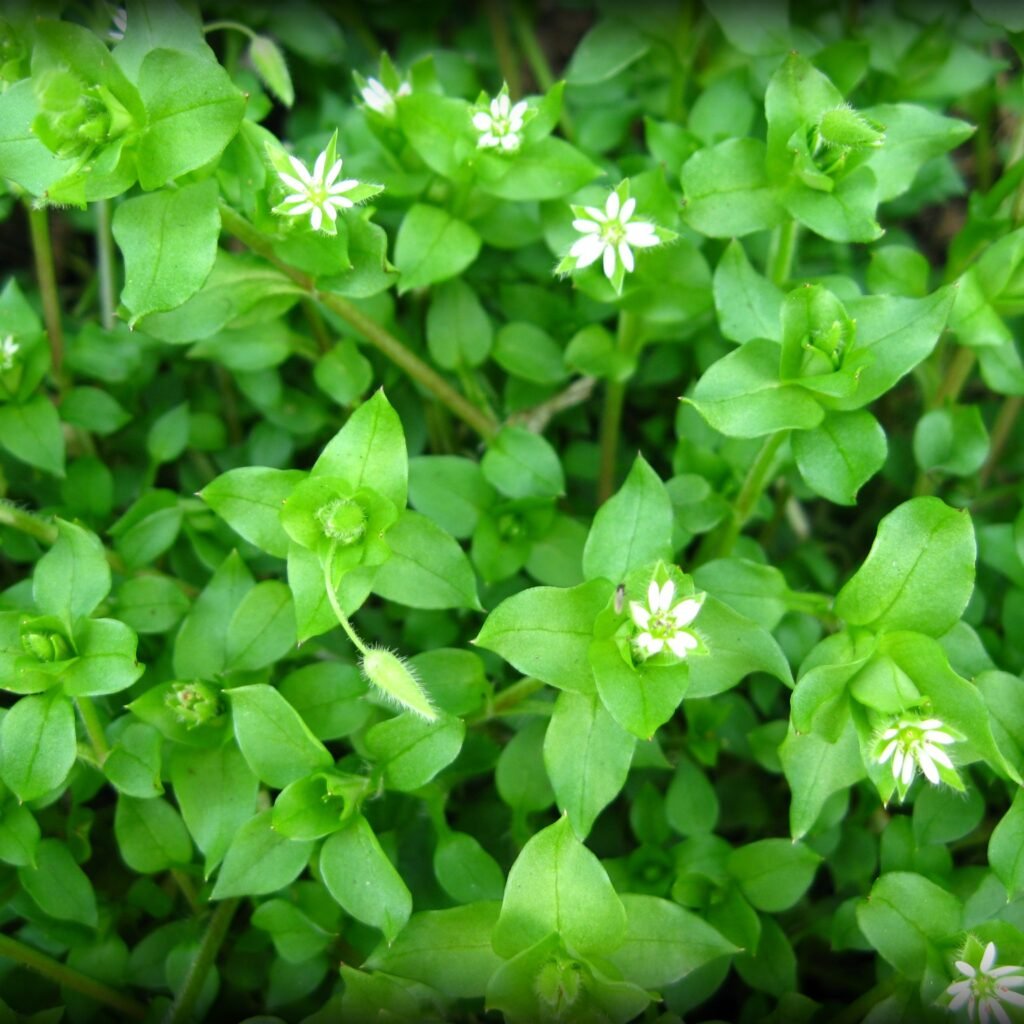
Chickweed is often considered a wild plant, but it is highly beneficial and can be harvested for several reasons:
- Nutritional Value: Chickweed is rich in vitamins A, C, and B-complex, minerals like calcium, magnesium, potassium, and iron, and is high in antioxidants.
- Edible Leaves and Stems: Young shoots and leaves are tender and mild, perfect for salads, sandwiches, or soups.
- Medicinal Uses: Traditionally, chickweed has been used to support skin health, digestion, and anti-inflammatory purposes.
- Easy to Grow and Regrow: Harvesting doesn’t destroy the plant—leaving roots intact allows for continuous regrowth.
- Culinary Versatility: It can be eaten raw or cooked, making it a highly adaptable green for home gardens or wild foraging.
🌿 Identifying Chickweed for Harvest
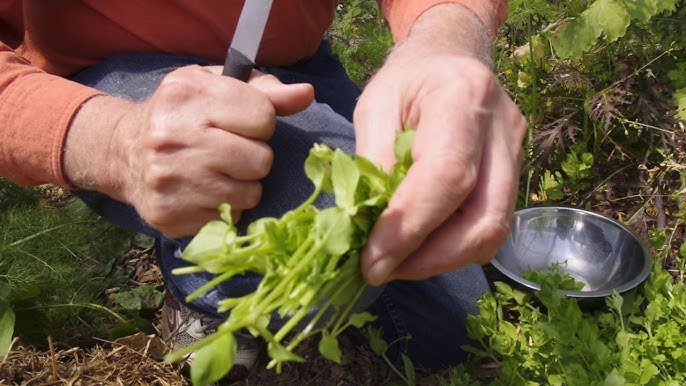
Before harvesting, it’s crucial to properly identify chickweed:
- Leaves: Small, ovate, bright green, and slightly pointed at the tip.
- Stems: Thin, trailing, and often slightly hairy with nodes where leaves grow.
- Flowers: Tiny, star-shaped, and white with five deeply notched petals, making them look like ten petals.
- Growth Pattern: Chickweed grows low to the ground and spreads quickly in clusters.
💡 Pro Tip: Make sure you harvest from areas free of pesticides, herbicides, or pollutants to ensure safe consumption.
✂️ Step 1: Choosing the Right Time to Harvest
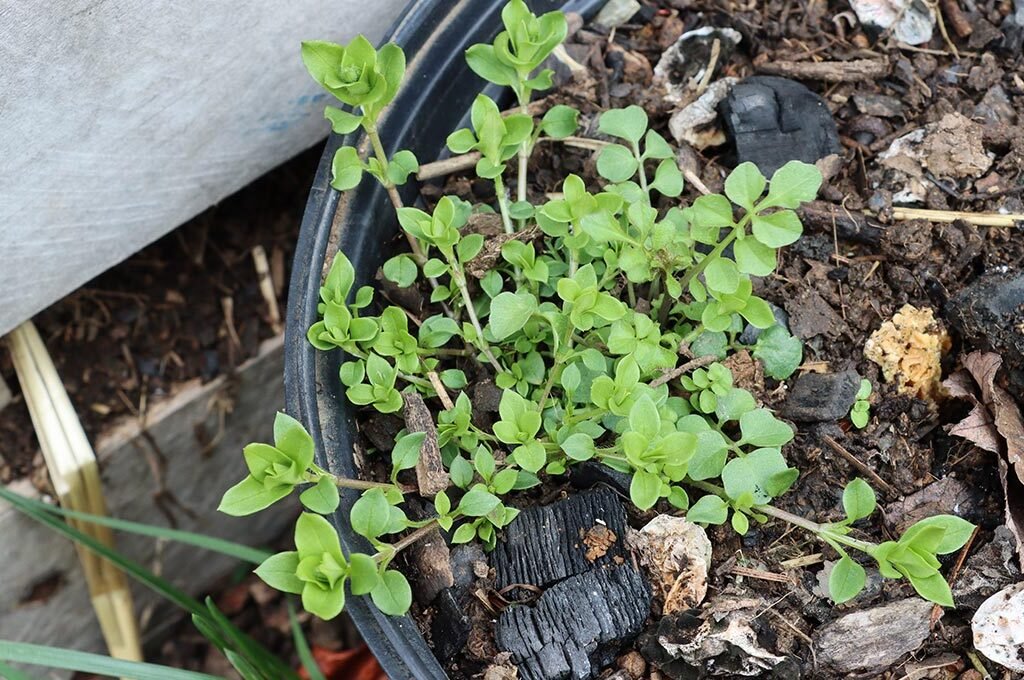
Timing is key when harvesting chickweed to ensure maximum tenderness and flavor:
- Young Shoots: The best leaves are harvested before flowering, usually in spring or early summer.
- Morning Harvest: Pick chickweed in the morning when leaves are crisp and hydrated.
- Avoid Over-Mature Leaves: Older leaves can be tough, bitter, or fibrous.
💡 Tip: Regularly harvesting encourages the plant to grow more shoots, giving you a longer harvest period.
🌱 Step 2: Tools for Harvesting Chickweed
Chickweed is delicate, so the right tools make harvesting easy and efficient:
- Scissors or small garden shears: To snip leaves and stems without damaging roots.
- Gloves: Optional, especially if harvesting from wild areas or soil with debris.
- Basket or tray: To collect harvested greens without crushing them.
💡 Pro Tip: Avoid pulling the plant from the ground unless you want to harvest roots, as leaving roots intact allows regrowth.
🌿 Step 3: Harvesting Technique
Proper technique ensures a clean harvest while promoting regrowth:
- Use scissors to cut outer leaves and tender shoots, leaving the central growing point intact.
- Harvest selectively, taking only what you need and leaving some shoots to continue growing.
- Avoid soil contamination by holding the plant close to the stem and gently shaking off dirt.
💡 Tip: If harvesting from wild areas, take care not to remove too much from a single patch—this ensures sustainability and continued growth.
🌱 Step 4: Handling Post-Harvest
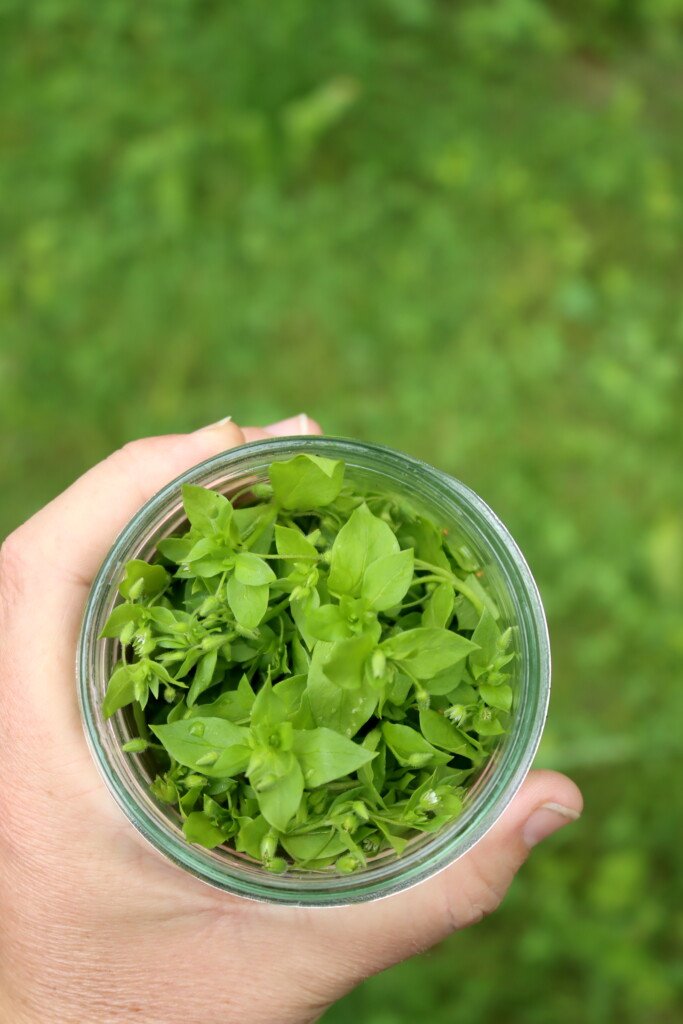
Once harvested, proper handling preserves freshness and nutrients:
- Wash thoroughly: Remove soil, insects, and debris under running water.
- Drain and dry: Use a colander or paper towels to remove excess moisture.
- Storage: Place in a plastic bag or airtight container with a damp paper towel and refrigerate for up to 3 days.
- Freezing: Blanch chickweed in boiling water for 1–2 minutes, then freeze for long-term storage.
💡 Tip: Use freshly harvested chickweed as soon as possible to enjoy the best flavor and nutrient content.
🌿 Step 5: Cooking and Culinary Uses
Chickweed is versatile in the kitchen:
- Salads: Young, tender leaves add a mild, fresh flavor. Combine with other leafy greens or herbs.
- Sandwiches and Wraps: Use raw chickweed as a crunchy, nutritious addition.
- Soups and Stews: Add towards the end of cooking to retain nutrients and color.
- Smoothies: Blend with fruits or other greens for a vitamin-rich drink.
- Pesto and Sauces: Mix with garlic, nuts, and olive oil for a unique twist on traditional pesto.
💡 Pro Tip: Chickweed’s mild flavor works best when lightly cooked or eaten raw, as prolonged cooking can reduce its delicate taste.
🌱 Step 6: Health Benefits of Chickweed
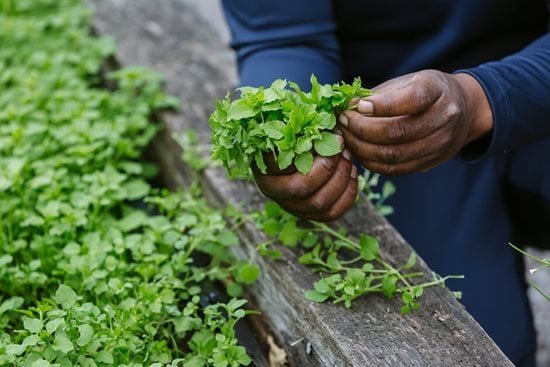
Chickweed is more than just a tasty green; it’s a nutritional powerhouse:
- Vitamin-rich: Supports eye health, immunity, and skin.
- Mineral-dense: Helps strengthen bones and regulate metabolism.
- Anti-inflammatory: Traditionally used for skin irritation and joint pain.
- Digestive aid: Promotes healthy digestion and gut health.
- Low in calories: Makes it ideal for healthy meals or weight management.
💡 Tip: Incorporating chickweed into daily meals is an easy way to boost overall nutrition naturally.
🌿 Step 7: Common Issues When Harvesting Chickweed
While chickweed is hardy, some considerations help ensure a healthy harvest:
- Pests: Aphids or small insects may appear, especially in wild growth. Rinse thoroughly or use mild organic treatments.
- Contaminated areas: Avoid harvesting near roads or sprayed lawns to prevent pesticide ingestion.
- Overharvesting: Taking too much at once can stunt regrowth. Harvest gradually for continuous production.
💡 Pro Tip: Observe the plant’s growth cycle and harvest only tender shoots for the best taste and nutrition.
🌱 Step 8: Encouraging Continuous Growth
Chickweed grows rapidly and can provide multiple harvests if managed properly:
- Selective harvesting: Always leave the central growth point intact.
- Moist soil: Water lightly and regularly to encourage fresh shoots.
- Light: Chickweed prefers partial sun to full shade, depending on climate.
- Fertilization: Not usually required, but a light organic compost can promote leafiness.
💡 Pro Tip: Staggered harvesting ensures a constant supply of fresh chickweed for your kitchen.
🌿 Step 9: Sustainable Harvesting Practices
Sustainability is key when harvesting wild or garden-grown chickweed:
- Take only what you need: Avoid stripping entire patches bare.
- Leave roots intact: Roots allow for regrowth and multiple harvest cycles.
- Rotate harvesting areas: If you have multiple patches, rotate harvest sites for regeneration.
- Avoid chemical exposure: Do not harvest from lawns or areas treated with herbicides or pesticides.
💡 Tip: Sustainable harvesting ensures chickweed remains available for future seasons.
🌱 Step 10: Incorporating Chickweed into Your Garden
Even if you already have a garden, chickweed can be a valuable addition:
- Ground cover: Grows quickly and protects soil from erosion.
- Companion planting: Can be grown alongside herbs and vegetables to improve soil and microclimate.
- Edible landscaping: Offers fresh, wild greens for culinary use.
💡 Pro Tip: Chickweed can be grown in containers, raised beds, or window boxes for easy access and controlled harvesting.
🌿 Conclusion: Enjoy Fresh, Nutritious Chickweed
Harvesting chickweed is simple, sustainable, and rewarding. By following these steps—identifying the plant, picking tender shoots, handling post-harvest, and using it creatively—you can enjoy fresh, nutritious greens year-round.
Whether for salads, soups, sandwiches, or smoothies, chickweed adds a mild, peppery flavor and valuable nutrients to your meals. With careful harvesting and sustainable practices, you can keep your chickweed plants producing healthy, tender shoots for weeks or months.
So, grab a basket, a pair of scissors, and start harvesting chickweed today—your kitchen and your health will thank you!
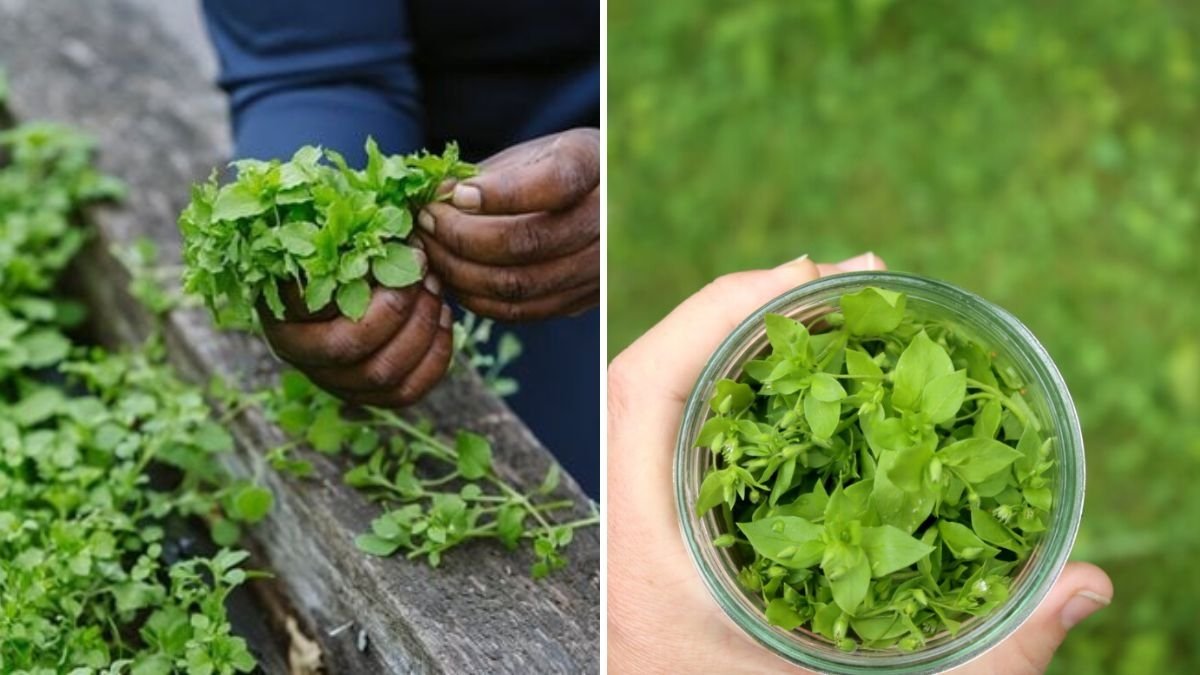
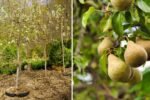
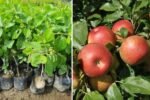



Leave A Comment